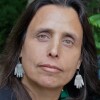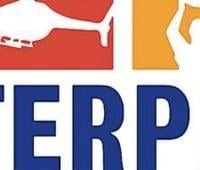We all honor those who have passed to the Spirit World. In Anishinaabe teachings, Wawatay, or the Northern Lights are our ancestors dancing. They dance more than ever these days as the display of the aurora borealis amazes us many evenings. We show respect for those who have passed on by acknowledging them, sometimes in federal holidays like Memorial Day, but in many cultures by a feast, and some sort of ceremony.
Our ancestors are revered, and the dearly departed who have traveled on are often offered feast food, or perhaps offerings placed on their grave houses, or a smoke of sacred tobacco.
In many cultures, a late fall feast is held, as the fields close down for the winter, and we go inside for warmth.
Halloween is certainly a big shot holiday these days – and I have to say that it’s my favorite American holiday for all the dress up and mischief. But it does something to the dead. It often portrays them as scary or evil. That’s not natural.
My ancestors were not evil. Pretty much a clean slate there. And my dearly departed, I hope they live peacefully in the other world.
Indeed, American culture has done a lot to separate us from death and dying, as people often die alone in hospital beds these days, when in our old ways we would be present, to send them off with a good song.
For those ancestors who passed from the violence of the cavalry, or perhaps the starvation of wars, I want to remember them and honor their spirits. That’s why many of our family members ride on the Dakota 38 Memorial Ride, as well as the Whitestone Memorial Ride. We do not want to erase them from our memory, but instead to honor them. And to say that they did not receive justice.
The Day of the Dead celebration, or Día de los Muertos, from Mexican Indigenous traditions is a strong tradition. Indeed, it is a celebration of life and metamorphosis. That metamorphosis is really embodied in monarch butterflies, which were so much fewer in number, but migrating still in September.
Here’s the story, according to the AI, folks, “Like clockwork, migrating monarchs arrive in Mexico the same time of year, every year. Their arrival coincides with Día de los Muertos (Day of the Dead), which is observed in Mexican culture between Nov. 1 and Nov. 2. Día de los Muertos is a celebration of the deceased. Families and friends gather at gravesites, build altars decorated with photos, offerings, ornate sugar skulls, bright orange marigolds and candles.
“The living share refreshments and stories to celebrate the lives of their friends and ancestors that have passed. This holiday serves to keep the dead alive in the hearts and memories of the living historian Chavez, would tell CNN in 2019.
“The Purepecha and the Mazahua peoples of Michoacan have tracked the monarch’s return to Mexico for centuries.” The arrival of the butterfly, known as la parakata in Purépecha, meant that it was time for the corn harvest. The parakatas were also believed to be the souls of the dead visiting for the night of Día de los Muertos (Lewis, 2019). The swaths of captivating monarchs flying overhead have continued to be an important connection between the living and the dead.”
The monarchs have been taking quite a hit from the BT corn in some of these fields around here, and sadly, some of the monarch wintering grounds are threatened by mining and logging companies. It seems like we would want to give those guys a break.
In 2020, two Mexican butterfly protectors were found dead within days of each other: Homero Gómez González was found Jan.29, 2020, two weeks after going missing. Gómez was a monarch butterfly sanctuary manager who opened the sanctuary to stop illegal logging in the area.
A few days later, Raúl Hernández Romero, a part-time monarch sanctuary tour guide, was found dead, showing injuries inflicted by a sharp object.
The monarchs have made their journey from the North Country, but communities in the north can celebrate them at Día de los Muertos, Day of the Dead, Celebration on Friday, Nov. 1 at the Giiwedinong Museum in Park Rapids, Minn.
Two Mexican artists, Guillermo Valadez and his wife, Ana Navarro, will prepare the altar for community offerings The museum invites everyone to come pay their respects and honor those who have passed, as well as the monarchs.
This celebration is very much about life, and through it we can remember to provide habitat for the butterflies. Monarchs, like other butterflies, have some amazing cells called Imago cells. Those are the ones which transform a caterpillar into a butterfly. The word imago is the root for the word imagination. That’s powerful – imagine that transformation. That’s a lesson to learn.
This is not a Mexican Halloween, but a time to honor ancestors and butterflies. Those in the North Country visit the Giiwedinong Museum for the Day of the Dead celebrations.
Learn more at
www.giiwedinong.org/events/dayofthedead
. Learn more about the traditions and history of ‘Días De Los Muertos’ at
.
Winona LaDuke is an Ojibwe writer and economist on Minnesota’s White Earth Reservation. She also is co-curator of the Giiwedinong Museum in Park Rapids, Minn.
Winona LaDuke is an Ojibwe writer and economist on Minnesota’s White Earth Reservation. She also is co-curator of the Giiwedinong Museum in Park Rapids, Minnesota, and a regular contributor to Forum News Service.












